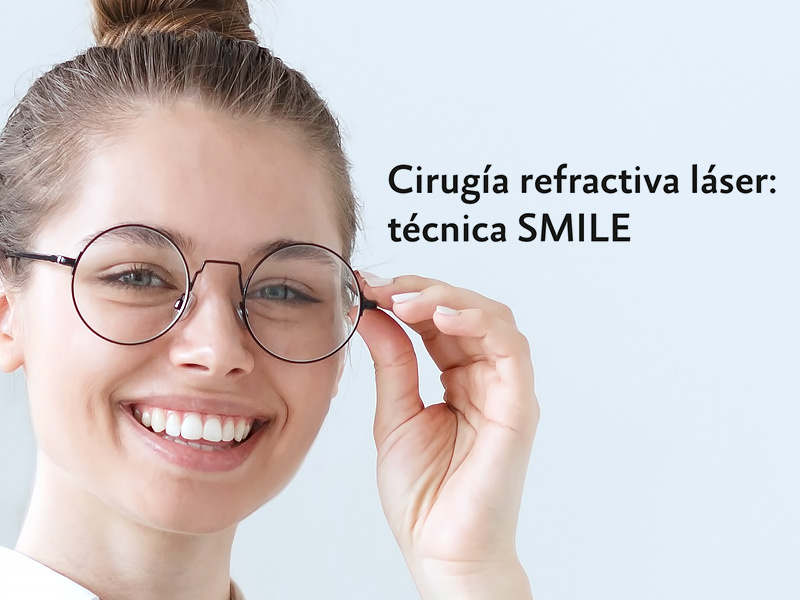All about the skin around the eyes and “drooping” eyelids
04/04/2025

23/07/2018
Refractive surgery is an ophthalmic discipline that has significantly evolved to gain considerable levels of safety and effectiveness. In addition, treatment time has reduced, the laser pattern applied has been optimised to save tissue, surgery has been aided by incredibly precise instruments like femtosecond lasers... and just when it looked like there was nothing left to discover, along came a new technique: SMILE.
It’s a procedure that modifies the corneal curvature by cutting out a thin internal layer which is then removed through a very small incision. This is why it's known by the initials SMILE (Small Incision Lenticule Extraction), which, in broader terms, means that a small incision is used to remove the lenticule. The advantages are based on the fact that, as per LASIK, the epithelium is retained, so the post-operative period is almost pain-free, and just like PRK, the surface layers remain intact, and given that these are the most important—structurally speaking—there is a lower risk of ectasia. Furthermore, it seems that the risk of dry eye is also reduced since the corneal nerves are less affected. On the other hand, the whole procedure is carried out at the same time. As per PRK, it can be performed on patients at risk and, it’s not critical if patients rub their eyes during the postoperative period (although it’s not recommendable either). The main disadvantages are that it is largely dependent on the surgeon’s skill and that patients recover their vision slightly more slowly than they would with LASIK.
It’s important to conclude by saying that no technique is better or worse in this field, as what really matters is which one best suits each patient. A proper diagnosis is the key to the application of promising techniques like SMILE.
Other refractive laser surgery techniques include:
PRK (Photorefractive keratectomy)
. The laser can be applied directly to the corneal epithelium. It largely respects the structure and physiology of the cornea, as it acts superficially .
. It is a quick procedure that is completed in one session.
. It is painful for a few days and visual recovery is slow.
. It indicated for patients with thin corneas and those who may receive impacts to the eyes because of their job or hobbies.
LASIK (Laser-assisted in situ keratomileusis)
. To avoid damage to the epithelium, a flap is lifted, the laser is applied to the inside (a layer known as the corneal stroma) and the flap is repositioned.
. There is minimal irritation and visual acuity is quite good the day after surgery
. The treatment is performed over 2 sessions, with an interval of a few minutes between each one, and it ends up having a deeper effect on the cornea, which may affect the structure and corneal nerves.